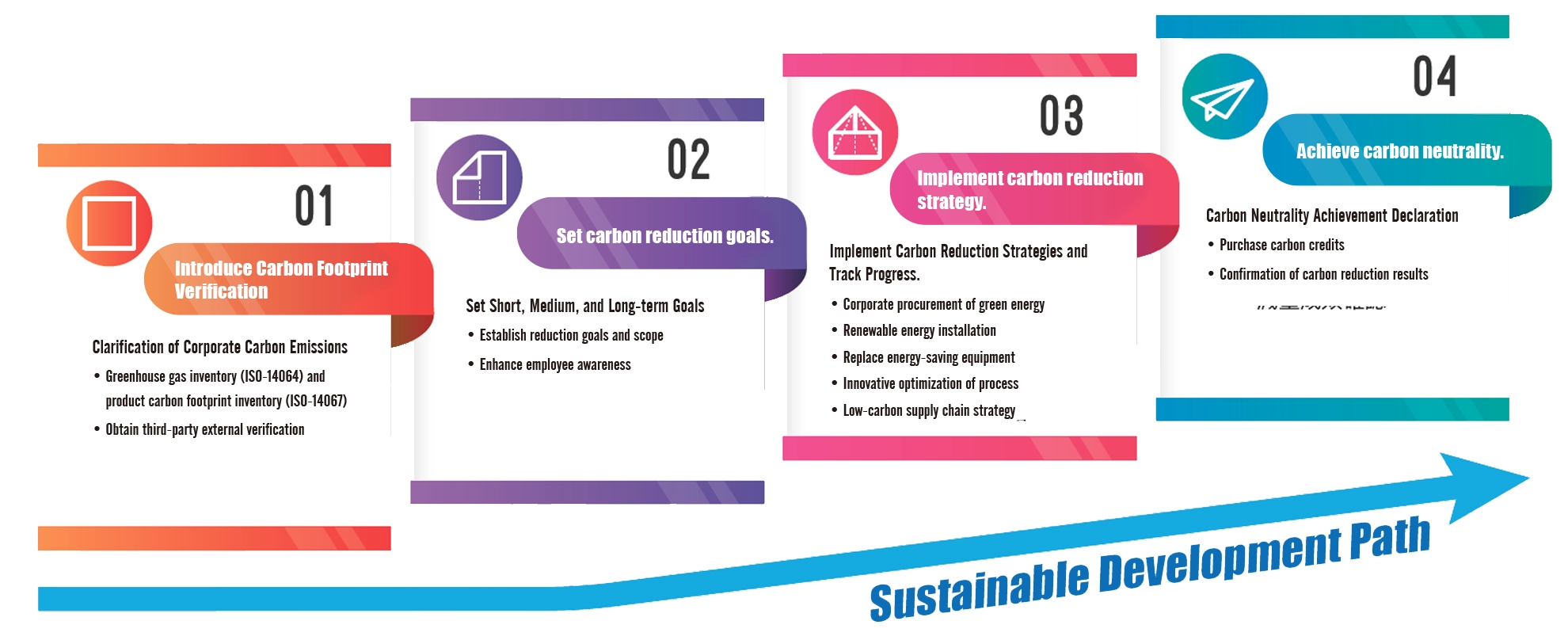
Climate Action
In recent years, frequent disasters caused by climate change have prompted Formosa Laboratories to proactively respond to climate disasters and prevent related financial losses. the Company will adopt the climate-related financial disclosure recommendations formulated by the Task Force on Climaterelated Financial Disclosures (TCFD), which was established by the Financial Stability Board (FSB) in 2015. The Company will voluntarily disclose its response policies and preventive measures in the face of climate-related risks, appropriately disclose the financial impact caused by these risks, and identify opportunities to ensure profitability and enhance the Company's climate resilience after proper climate adaptation and disaster recovery, in order to cope with subsequent climate disasters.
Management of material topic “response to climate change” at Formosa Laboratories in 2023
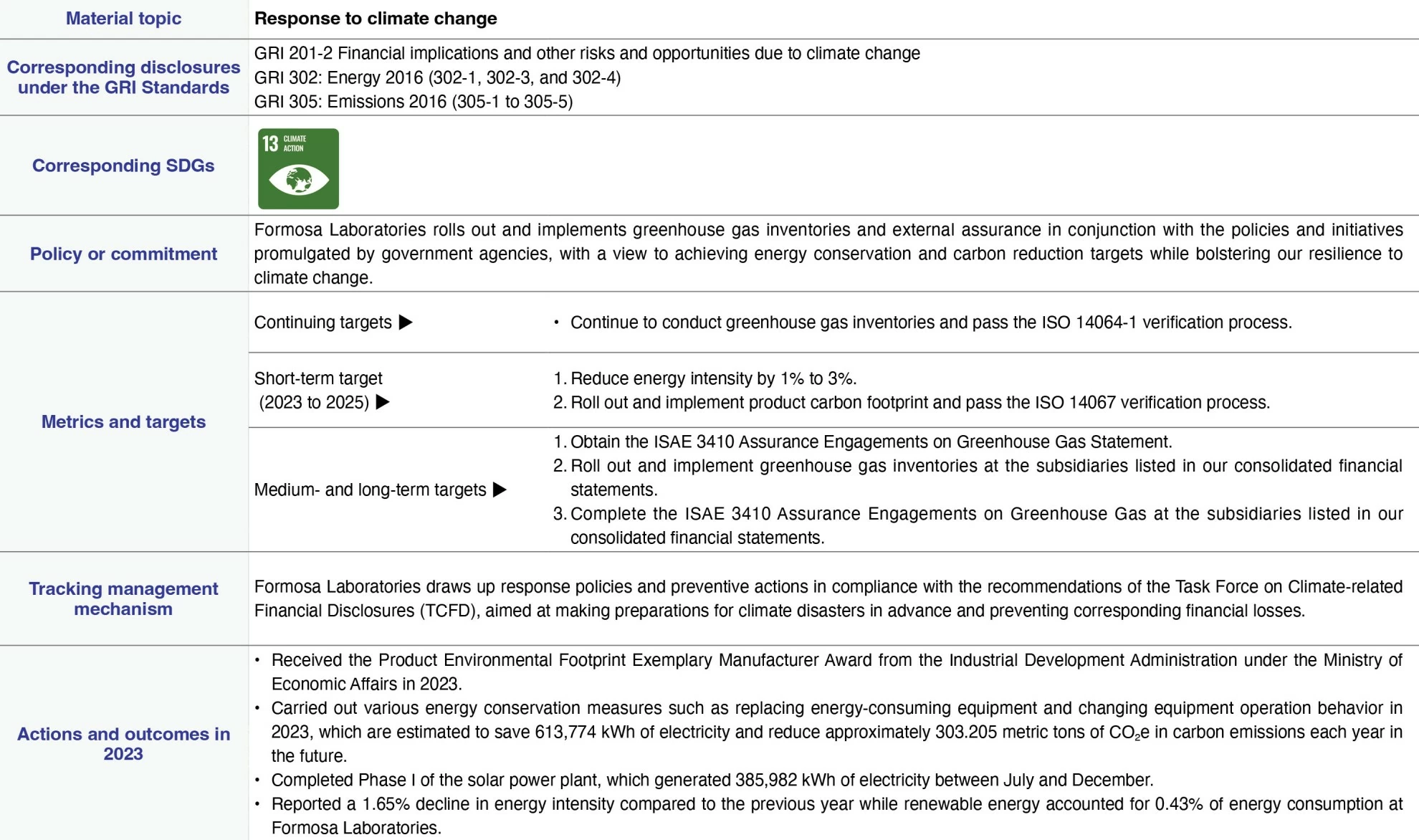
Four Pillars of TCFD Recommendations
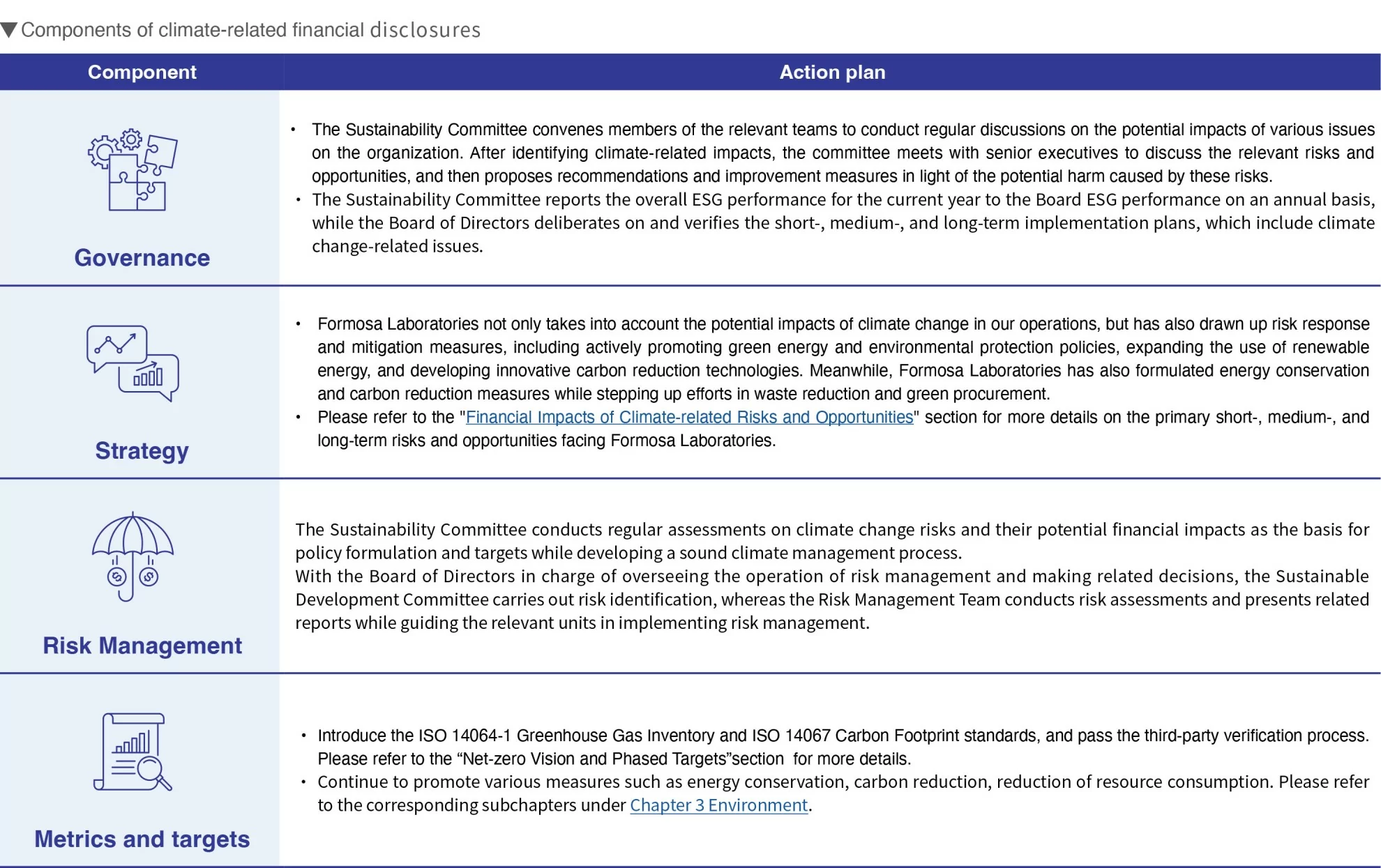
Financial Impacts of Climate-related Risks and Opportunities
Formosa Laboratories conducts assessments of climate risks and opportunities, which are analyzed according to level of impact and likelihood of occurrence. Specifically, level of impact is divided into three levels, namely high, moderate, and low, whereas likelihood of occurrence is divided into three levels, namely unlikely, somewhat likely, and highly likely, aimed at identifying and analyzing moderate- and high-risk items, and eventually formulating appropriate response measures to deal with such risks.
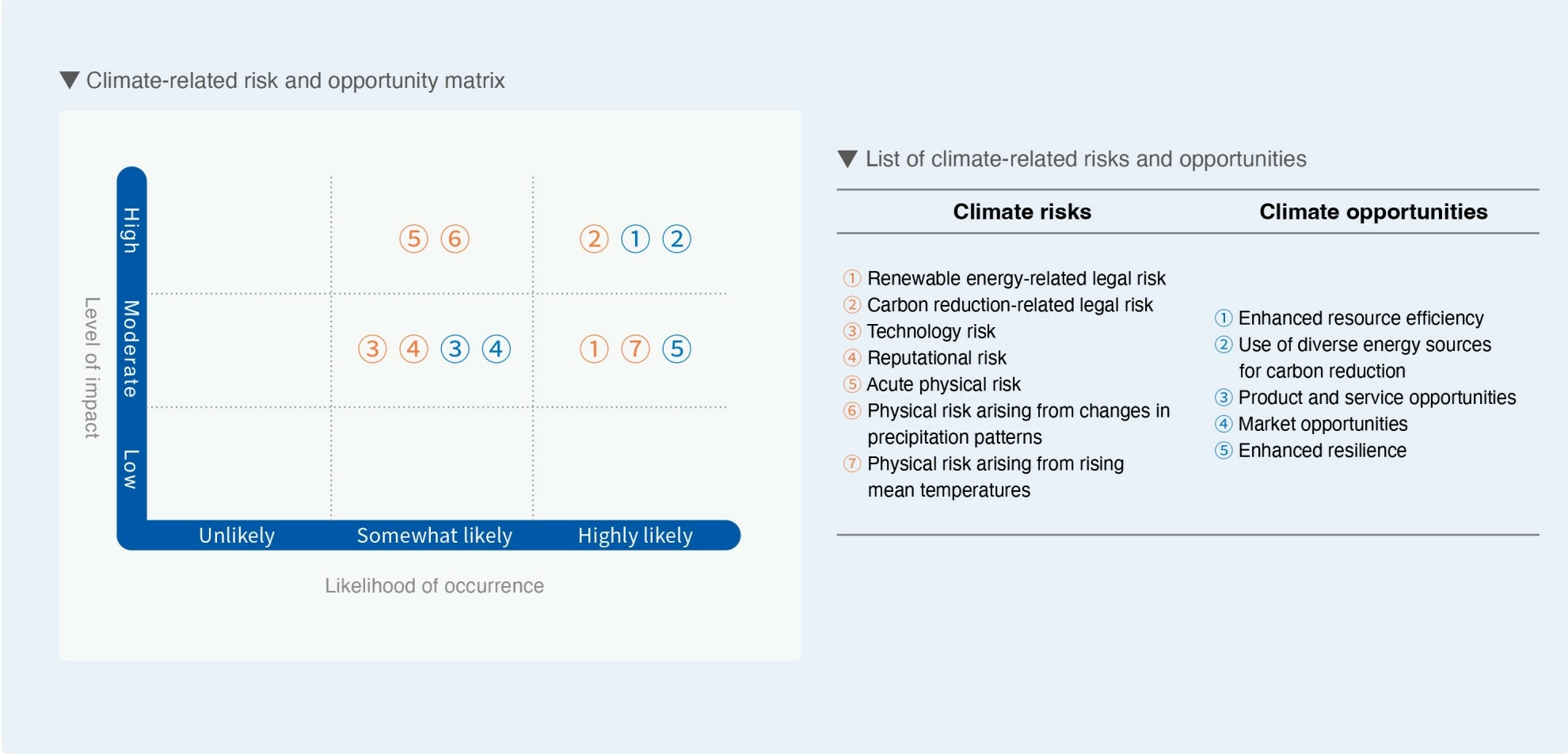
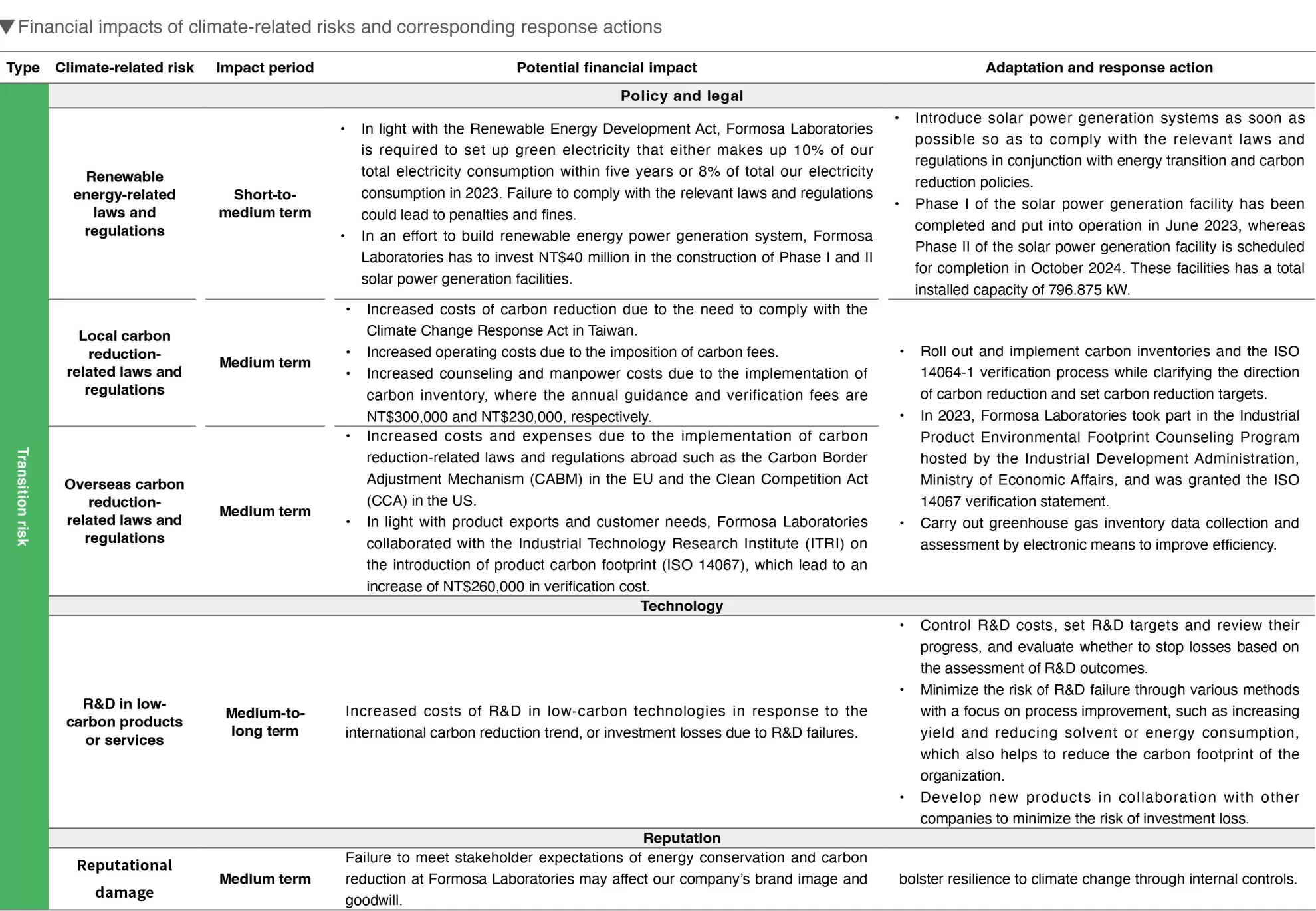
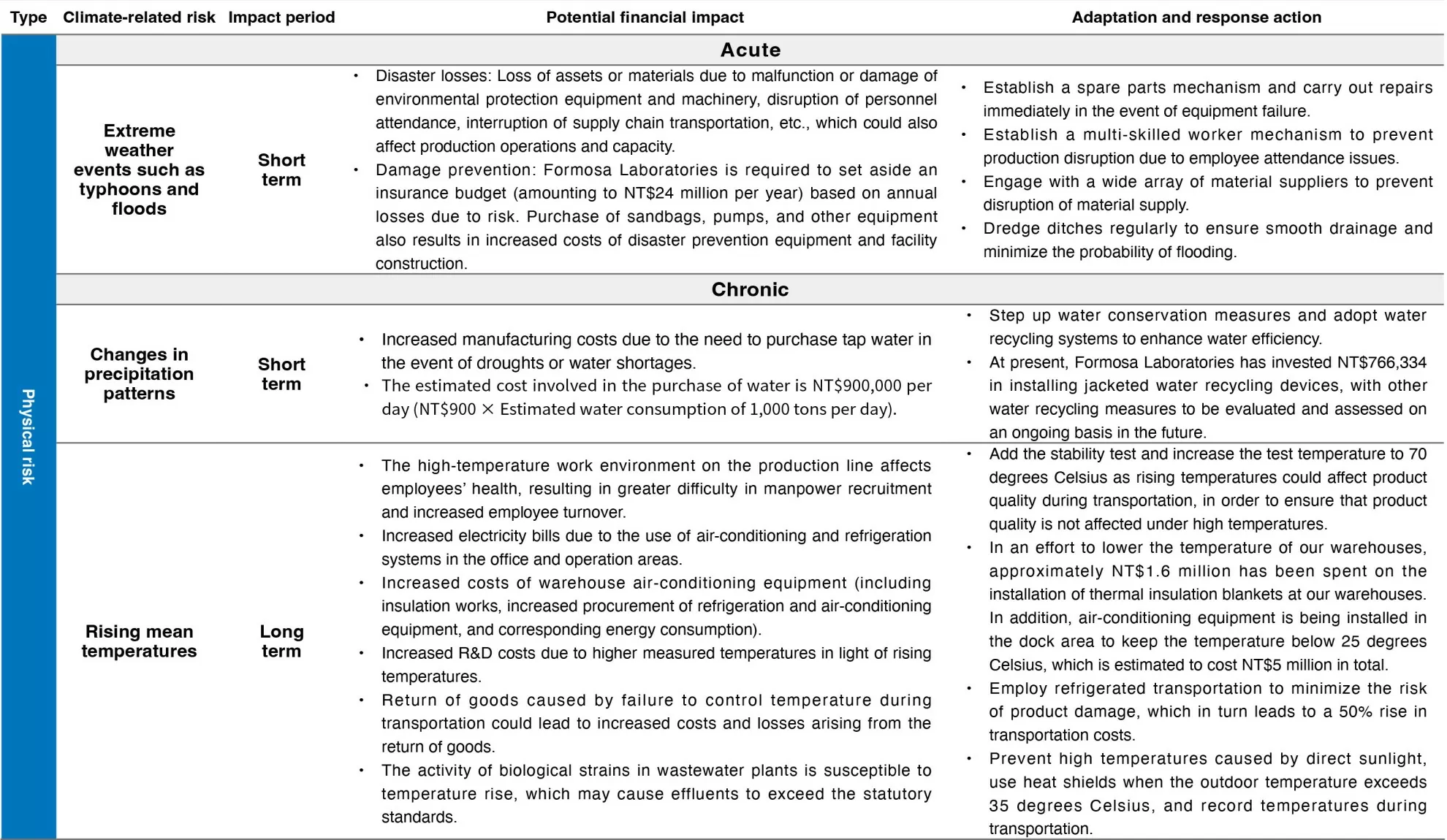
Financial impacts of climate-related opportunities and corresponding response actions
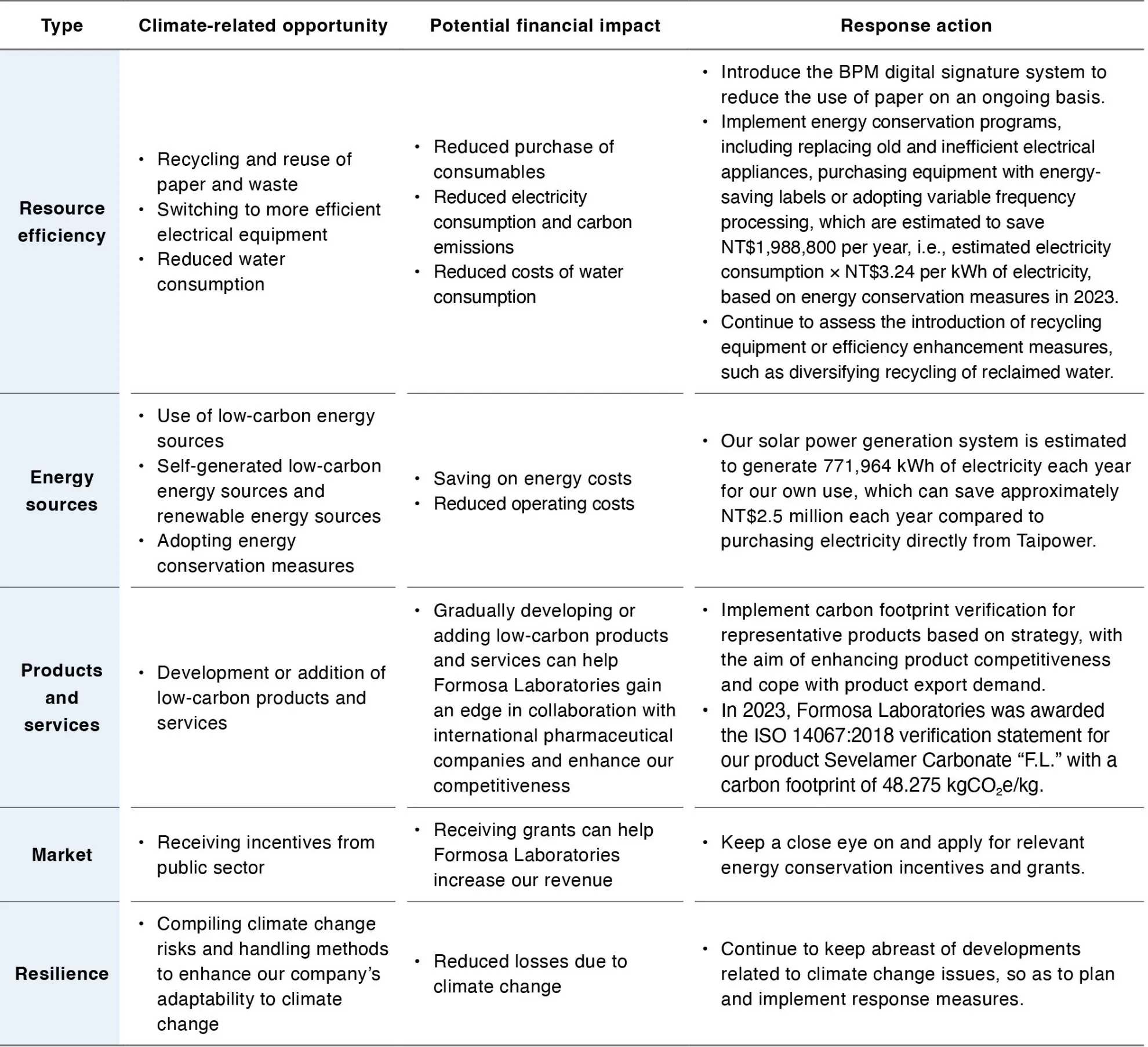
▼ISO 14067:2018 verification statement for Sevelamer Carbonate “F.L.”
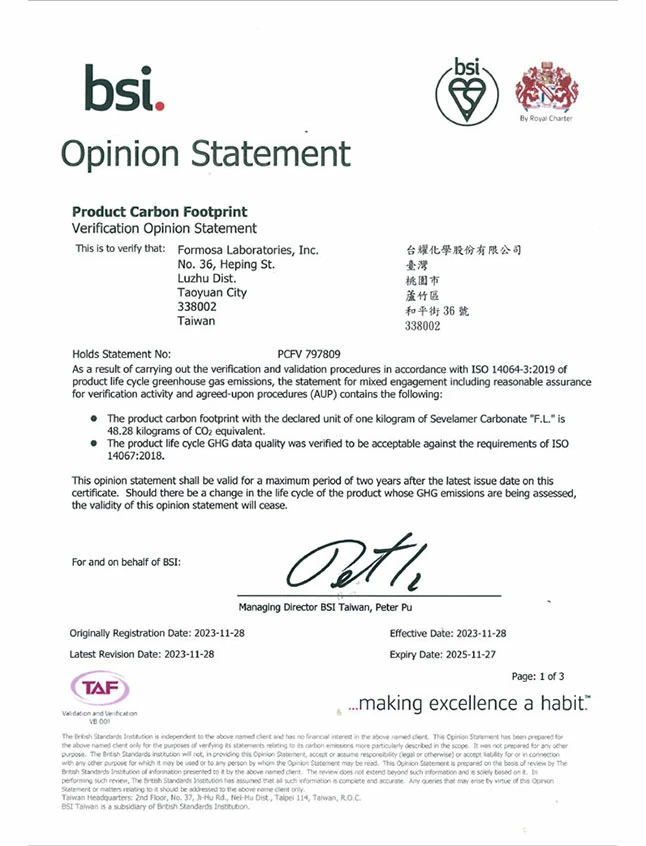
▼Product Environmental Footprint Exemplary Manufacturer Award from the Industrial Development Administration under the Ministry of Economic Affairs
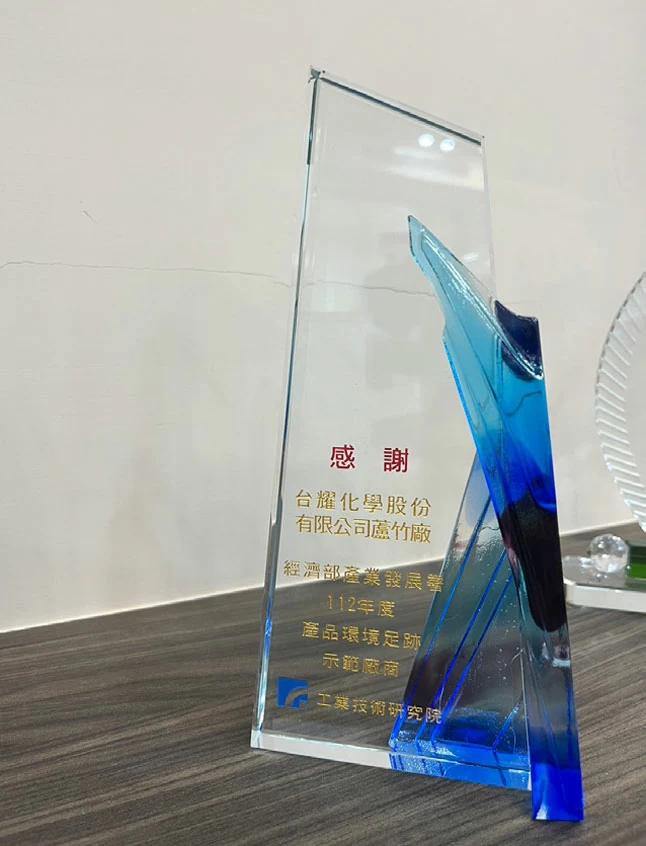
Net-zero and Low-carbon Transition Vision
Formosa Laboratories has been conducting greenhouse gas inventories since 2021 in conjunction with the government’s 2050 netzero transition policy and global trends in carbon reduction. After collecting information on the organization’s carbon emissions using the methodology stipulated in the latest ISO 14064-1:2018 standards in 2022, Formosa Laboratories has gradually developed our sustainable development pathway and set short-, medium-, and long-term targets in response to climate risks, so that we can continue to review energy policies and formulate relevant rules and regulations.

Four Core Elements of TCFD
Core Elements of Climate-Related Financial Disclosures
| Core Elements | Action Plans |
|---|---|
| Governance |
|
| Strategies |
|
| Risk Management |
|
| Indicators and Objectives |
|
Impacts of Climate-related Risks and Opportunities on Finance
Formosa Laboratories conducts risk assessment for climate risks and opportunities. The analysis is based on the severity of impact and the likelihood of occurrence, with impact severity classified into three levels: low, medium, and high, and occurrence likelihood classified into three levels: unlikely, possibly, and very likely. High and medium risk projects are identified through the analysis, and appropriate response measures are subsequently developed to enhance resilience in addressing climate change risks and opportunities.
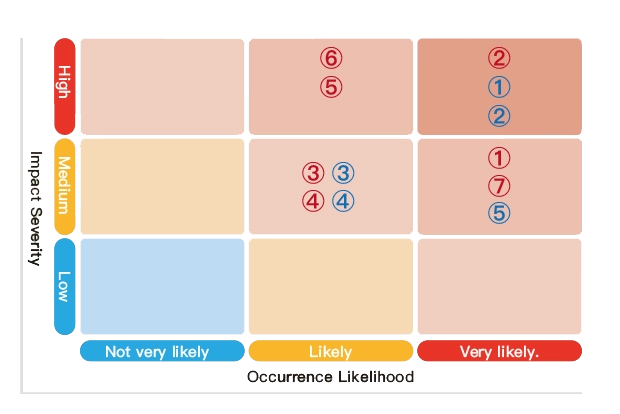
Climate Risks
① Policies and regulatory risks (related to renewable energy regulations)
② Policies and regulatory risks (related to carbon reduction regulations)
③ Technical risks (development cost of low-carbon technology and services)
④ Reputational risks (reputation damage)
⑤ Immediate physical risks (such as extreme rainfall and other abnormal weather events)
⑥ Long-term entity risks (changes in precipitation patterns)
⑦ Long-term physical risk (average annual temperature rise)
Climate Opportunities
① Improvement of resource use efficiency
② Diversifying energy sources to reduce carbon emission
③ Product and service opportunities
④ Market opportunities
⑤ Increase in resilience

Climate-related risks and financial impacts
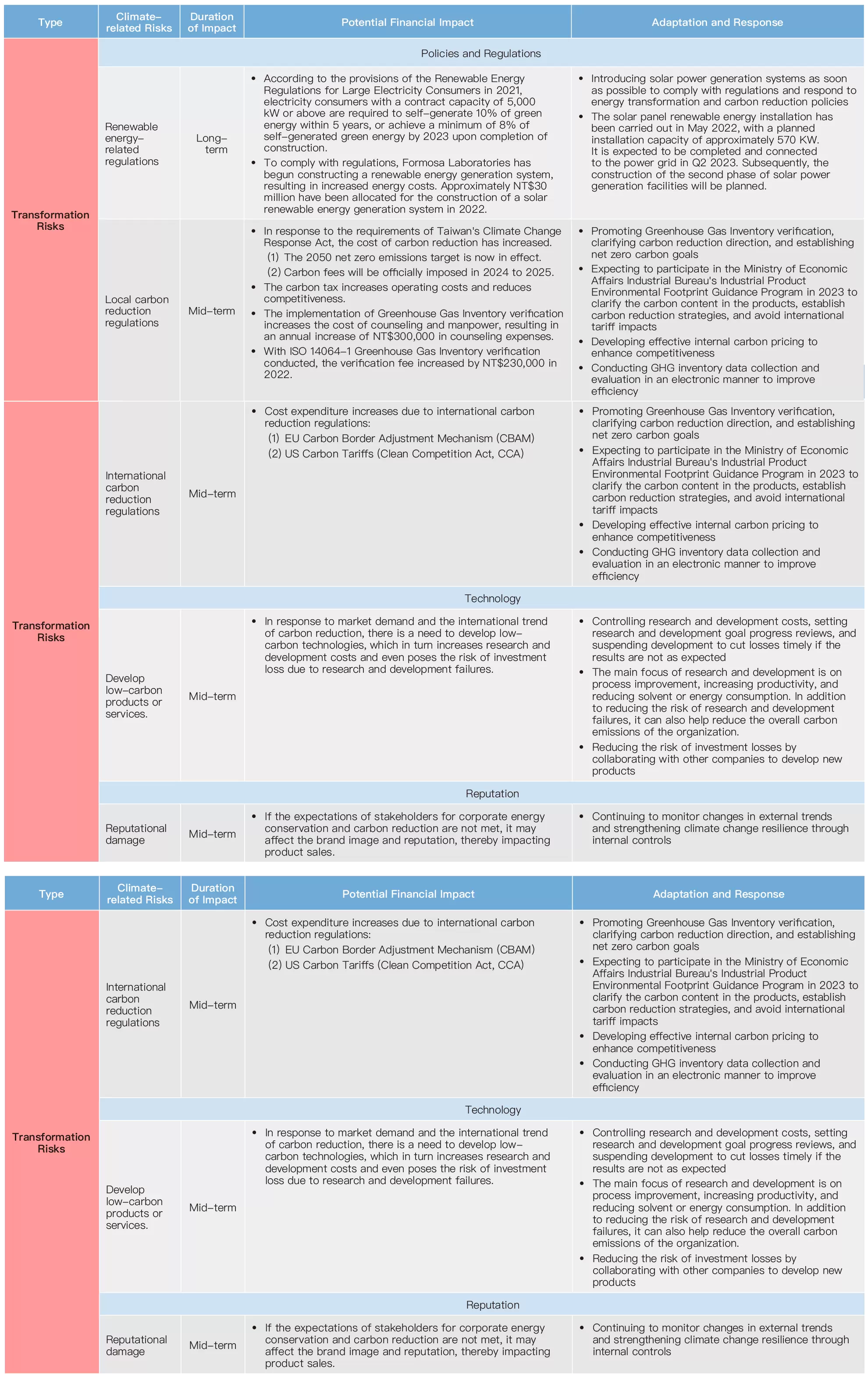
Climate-related opportunities and financial impact
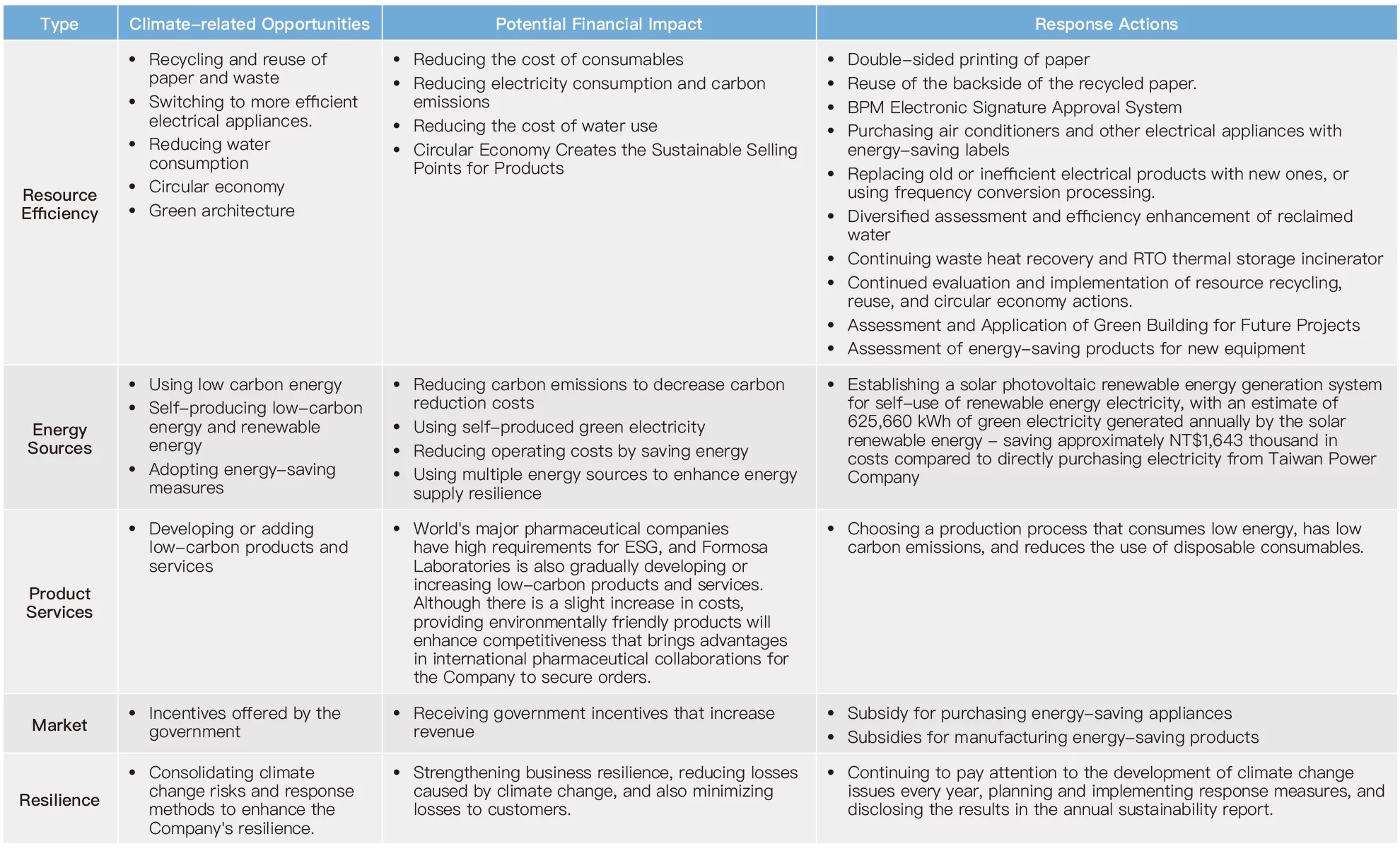
Formosa Laboratories' Vision for Net Zero and milestones for each stage
With the climate change caused by greenhouse gases, extreme weather events threaten the safety of the public's lives and properties, and even affect business operations and sustainable development. In order to achieve harmony and sustainable management goals and deepen the importance of climate change risks in the hearts of our colleagues, the Company has started GHG inventory-related operations since 2021. In 2022, it collected organizational carbon emission-related information using the methodology of the latest standard ISO 14064-1:2018.
After sufficient inventory information is available, the Company will gradually establish a sustainable development path for green management as its short-term, mid-term, and longterm goals in response to climate risks, in order to facilitate internal and external review of energy-saving and carbon reduction policies and the formulation of relevant regulations. The relevant sustainable development path and stage goals are as follows:
